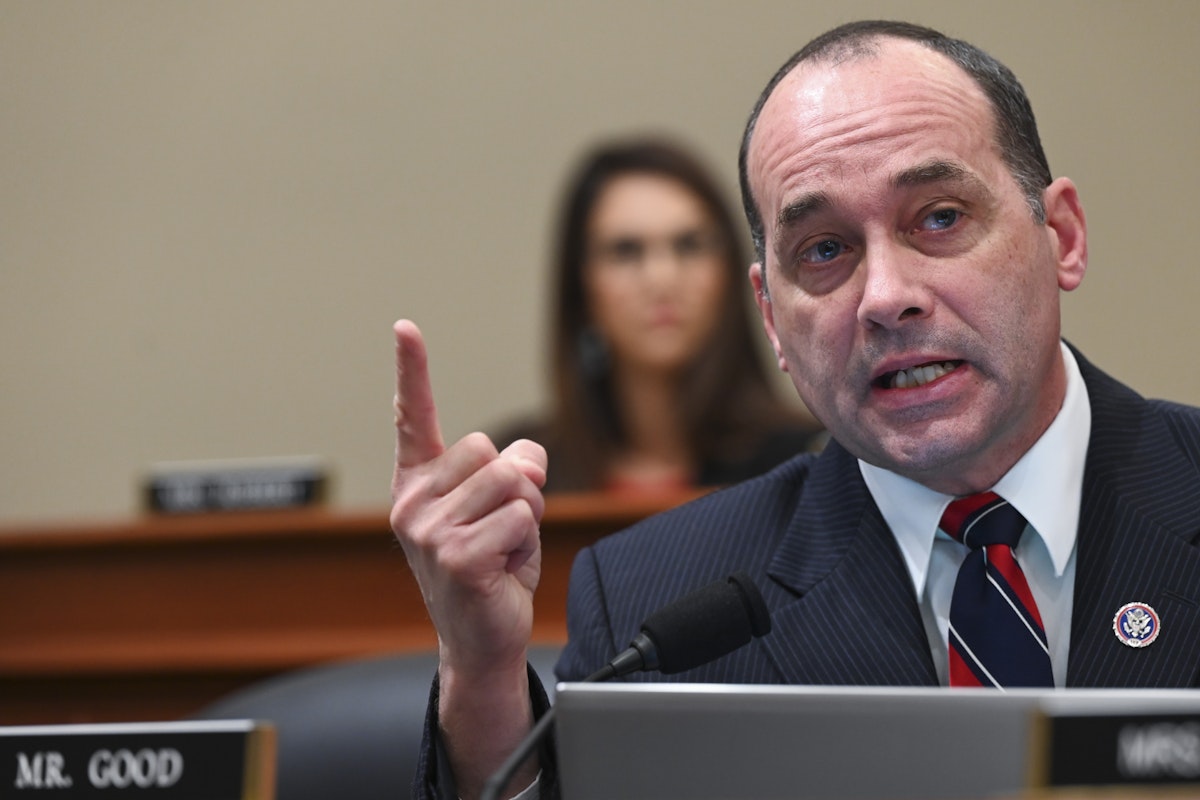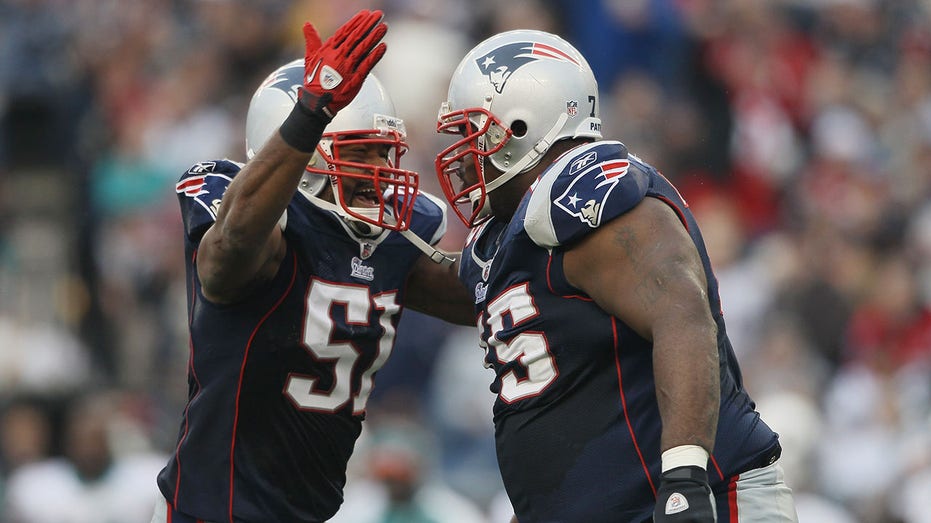The GOP Showed Again How Anti-Worker It Really Is
If, as Senator Marco Rubio said last year, “GOP voters are working-class Americans, and they are changing the party,” the House Education and the Workforce Committee never got the memo. Start with the committee’s name, which, whenever Republicans regain the majority, they insist on changing from “House Education and Labor.” The mere word “labor” (which can mean “labor union” but more commonly distinguishes workers from capital, or stockholders) is intrinsically offensive to the GOP. How can a party that collapses onto a fainting couch when it hears “labor” pretend to represent working people?Through vigilance against the menace of forced unionism. “Let’s give workers the right to work and end compulsory union membership,” said Bob Good, Republican of Virginia, at a Thursday morning hearing on the GOP’s National Right to Work Act, a bill sponsored by Representative Joe Wilson, Republican of South Carolina, that would turn all 50 states into right-to-work (i.e., union-bleeding) states. At the moment, 26 states are right-to-work. (Michigan, at twenty-seventh, rescinded its right-to-work law this year.)Good is chairman of the Health, Employment, Labor and Pensions Subcommittee (which apparently forgot to strike the l-word from its name), not to be confused with the Subcommittee on Workforce Protections (that’s more like it!), which, one day before Good’s hearing, demonstrated its commitment to America’s working class by holding a hearing titled “Bad for Business: DOL’s Proposed Overtime Rule.” That rule would extend overtime coverage to 3.6 million workers. Behold the American working class’s reward for favoring Republicans over Democrats in the 2022 midterms, 55–43 percent.Chairman Good to the contrary, there is no such thing as compulsory union membership. The reason people think there is is that the National Right to Work Committee insists on saying so. The National Right to Work Act, testified Mark Mix, president of the National Right to Work Committee, “would make union dues voluntary for all Americans.” But union dues are voluntary now. As Mix well knows, it’s illegal to force anybody to join a union. That’s called a “closed shop,” and Congress outlawed closed shops way back in 1947. What’s compulsory in the 23 states that are not right-to-work is that union nonmembers in union-organized workplaces must pay agency fees to cover their share of collective-bargaining costs. Right-to-work laws free workers from this obligation. Since collective bargaining wins union members and nonmembers alike more benefits, higher salaries, and various job protections, declining to pay an agency fee makes economic sense at the individual level. When a union nonmember working in a union shop can get away with quitting the union, saving on dues, and continuing to enjoy all the benefits that collective bargaining provides, it can be pretty hard to persuade that person to stay in the union. Why buy the cow when you can milk it through the fence?Enjoying union benefits without joining the union and paying for those benefits is known as the “free rider” problem, and it reduces union membership. The free-rider problem is why private-sector union membership in right-to-work states (5.2 percent) is roughly half the rate in non-right-to-work states (10.2 percent). According to a June 2022 study by Nicole Fortin, Thomas Lemieux, and Neil Lloyd of the University of British Columbia, the five states that passed right-to-work laws between 2011 and 2017—Indiana, Michigan, Wisconsin, West Virginia, and Kentucky—saw a 4 percent decline in union membership during the five years after the laws were passed and a 1 percent drop in wages. Two more recent studies recorded a more dramatic wage drop of 4 percent.The burden of compulsory agency fees weighs lightly on the Republican majority on Good’s subcommittee. Two-thirds of them, including Good and Wilson, represent states that already have right-to-work laws. That raises the question of why they’re so worked up about so-called forced unionization. It doesn’t likely have much to do with pleasing voters; almost half of all Republican voters, and a 69 percent majority of independents, favor labor unions, and in the 2016 presidential primaries, former Wisconsin Governor Scott Walker belly-flopped with his anti-union message. More likely, Good and Wilson are pushing national right-to-work legislation to gratify donors, the GOP’s only real constituency for union-bashing. In the current election cycle Good collected about $20,000 from construction companies and nearly $10,000 from the securities industry, while Wilson collected $21,000 from the aerospace industry and $15,000 from defense firms. None of these industry sectors is union friendly.Representative Eric Burlison, Republican of Missouri, is an exception. He does not represent a right-to-work state, so his anger is more logical. “I’m really jealous of the people that were sitting on either side of me,” Burlison said at the hearing. “I’m from Mi

If, as Senator Marco Rubio said last year, “GOP voters are working-class Americans, and they are changing the party,” the House Education and the Workforce Committee never got the memo. Start with the committee’s name, which, whenever Republicans regain the majority, they insist on changing from “House Education and Labor.” The mere word “labor” (which can mean “labor union” but more commonly distinguishes workers from capital, or stockholders) is intrinsically offensive to the GOP. How can a party that collapses onto a fainting couch when it hears “labor” pretend to represent working people?
Through vigilance against the menace of forced unionism. “Let’s give workers the right to work and end compulsory union membership,” said Bob Good, Republican of Virginia, at a Thursday morning hearing on the GOP’s National Right to Work Act, a bill sponsored by Representative Joe Wilson, Republican of South Carolina, that would turn all 50 states into right-to-work (i.e., union-bleeding) states. At the moment, 26 states are right-to-work. (Michigan, at twenty-seventh, rescinded its right-to-work law this year.)
Good is chairman of the Health, Employment, Labor and Pensions Subcommittee (which apparently forgot to strike the l-word from its name), not to be confused with the Subcommittee on Workforce Protections (that’s more like it!), which, one day before Good’s hearing, demonstrated its commitment to America’s working class by holding a hearing titled “Bad for Business: DOL’s Proposed Overtime Rule.” That rule would extend overtime coverage to 3.6 million workers. Behold the American working class’s reward for favoring Republicans over Democrats in the 2022 midterms, 55–43 percent.
Chairman Good to the contrary, there is no such thing as compulsory union membership. The reason people think there is is that the National Right to Work Committee insists on saying so. The National Right to Work Act, testified Mark Mix, president of the National Right to Work Committee, “would make union dues voluntary for all Americans.” But union dues are voluntary now. As Mix well knows, it’s illegal to force anybody to join a union. That’s called a “closed shop,” and Congress outlawed closed shops way back in 1947. What’s compulsory in the 23 states that are not right-to-work is that union nonmembers in union-organized workplaces must pay agency fees to cover their share of collective-bargaining costs. Right-to-work laws free workers from this obligation.
Since collective bargaining wins union members and nonmembers alike more benefits, higher salaries, and various job protections, declining to pay an agency fee makes economic sense at the individual level. When a union nonmember working in a union shop can get away with quitting the union, saving on dues, and continuing to enjoy all the benefits that collective bargaining provides, it can be pretty hard to persuade that person to stay in the union. Why buy the cow when you can milk it through the fence?
Enjoying union benefits without joining the union and paying for those benefits is known as the “free rider” problem, and it reduces union membership. The free-rider problem is why private-sector union membership in right-to-work states (5.2 percent) is roughly half the rate in non-right-to-work states (10.2 percent). According to a June 2022 study by Nicole Fortin, Thomas Lemieux, and Neil Lloyd of the University of British Columbia, the five states that passed right-to-work laws between 2011 and 2017—Indiana, Michigan, Wisconsin, West Virginia, and Kentucky—saw a 4 percent decline in union membership during the five years after the laws were passed and a 1 percent drop in wages. Two more recent studies recorded a more dramatic wage drop of 4 percent.
The burden of compulsory agency fees weighs lightly on the Republican majority on Good’s subcommittee. Two-thirds of them, including Good and Wilson, represent states that already have right-to-work laws. That raises the question of why they’re so worked up about so-called forced unionization. It doesn’t likely have much to do with pleasing voters; almost half of all Republican voters, and a 69 percent majority of independents, favor labor unions, and in the 2016 presidential primaries, former Wisconsin Governor Scott Walker belly-flopped with his anti-union message. More likely, Good and Wilson are pushing national right-to-work legislation to gratify donors, the GOP’s only real constituency for union-bashing. In the current election cycle Good collected about $20,000 from construction companies and nearly $10,000 from the securities industry, while Wilson collected $21,000 from the aerospace industry and $15,000 from defense firms. None of these industry sectors is union friendly.
Representative Eric Burlison, Republican of Missouri, is an exception. He does not represent a right-to-work state, so his anger is more logical. “I’m really jealous of the people that were sitting on either side of me,” Burlison said at the hearing. “I’m from Missouri, a state that, sadly, forces everyone to pay membership dues, or pay dues to a union, whether they want to or not.” Burlison pooh-poohed the free-rider argument, saying that the American Association of Retired Persons, or AARP, which lobbies for elderly people, doesn’t compel all elderly people to pay them a fee. That’s kind of a stupid angle, because collective bargaining isn’t political advocacy; it’s negotiation over an employment contract in a specific workplace. To the extent labor unions engage in political advocacy, the law already requires them to exclude that cost in calculating agency fees. Not even labor unions can make you pay for their political activities.
There was some effort at the hearing to recast the question of labor rights in the language of civil rights. Richard Kahlenberg and Moshe Marvit published an interesting book in 2012 titled Why Labor Organizing Should Be a Civil Right. The book called for revising the 1965 Civil Rights Act to add to the list of protected categories (race, color, religion, national origin, and sex) workers trying to organize a union. The idea was that civil rights violations carry much larger monetary penalties than labor violations, so they’d hurt employers more, and also that the language of civil rights is more familiar to younger workers than the language of worker rights.
At the hearing, ranking member Mark DeSaulnier, Democrat of California, followed this strategy, pointing out that right-to-work laws arose in the South in the 1940s specifically to keep African Americans from joining unions. Freedom was the last thing on these states’ minds. As Jody Calemine, director of labor and employment policy at the Century Foundation and the hearing’s sole pro-union witness, elaborated in his prepared statement:
While the state of Florida was adopting its first-in-the-nation “right to work” law [in 1944], it was actively defending a version of a state peonage law before the U.S. Supreme Court. Under that law, a worker could be arrested and prosecuted for fraud for quitting a job before the job’s term was over, restricting his right to work for another employer.
Similarly, Calemine explained, Georgia, which went right-to-work in March 1947 (three months before the Taft-Hartley Act extended federal sanction to such state laws), was simultaneously imposing vagrancy laws that essentially criminalized unemployment, especially for Black men.
The National Right to Work Committee’s Mix hit back by saying the legal requirement that unions represent union nonmembers arose in a 1944 Supreme Court case (Steele v. Louisville & N.R. Co.) in response to union racism:
White union officials said they didn’t want to represent Black workers on the railroad. And the Supreme Court looked at their power, derived from the Wagner Act, saying, “Wait a minute, you have power equal to a legislative body as it relates to the power you have over the workers that are in your unit.” So it was racism by white union officials that created this duty of fair representation, which the unions embraced and don’t want to give up because it gives them tremendous power over the workplace.
I found this so hard to follow that I had to play Mix’s words back three times. What Mix was saying, I finally grasped, was that union leaders complained in 1944 about having to represent union nonmembers because these nonmembers tended to be Black. Nonmembers tended to be Black because union leaders were racist and in those days tended to exclude Blacks from union membership. Eight decades later, that’s no longer the case; Blacks are now welcomed into unions. Now union leaders want to represent nonmembers because they’re no longer racist and because they’re power-hungry. Got that?
But in fact many union leaders would gladly give up representing nonmembers if labor law permitted them to organize only a portion of a bargaining unit. There’s no chance Mix would ever support that because this change would make it even easier to organize a workplace than would occur under the Democrats’ Protecting the Right to Organize, or PRO, Act, which would eliminate right-to-work altogether. Indeed, even now, the business lobby (of which the National Right to Work Committee is a part) screams bloody murder whenever the National Labor Relations Board recognizes a “micro” bargaining unit consisting, say, of all the meatcutters at a grocery but not all nonmanagement employees at the grocery.
Good ended the hearing on a discordant culture-war note, arguing that “unions are predominantly in blue states, I will point out, from which workers are fleeing in record numbers [for] free right-to-work states.” This is a cherished talking point for the right-to-work crowd but, as I’ve argued elsewhere, it makes no sense. Yes, people are migrating out of blue states, but how can the reason be labor unions when, even in blue states, only a small fraction belong to unions? In very pro-union California, for instance, 84 percent of workers are nonunion. A much likelier reason for blue-state out-migration is the cost of living, as I argued in my recent New Republic cover story about a different trend—college graduates fleeing red states. And anyway, as I further noted in that piece, blue-state out-migration is a relatively minor trend because, outside of college graduates, a pretty small (and declining) number of people in the United States migrate at all these days.
Good then took the argument even further. “If right-to-work was a bad thing,” he said, “free red states would be suffering and stagnating, while anti-choice blue states would be growing and flourishing. We all know the opposite is true.” What planet is Good on? With only a few exceptions, the most prosperous states are blue ones—so much so that Republican politicians have made a cottage industry out of peddling resentment against coastal elites. As has been noted more times than I can count (most recently, here), tax dollars from the wealthier and more high-tax blue states tend to get spent in poorer and more low-tax red states.
Almost no blue states are right-to-work. One exception is the state Good represents, Virginia. But if right-to-work is the path to riches, nobody told Virginia. Its per-capita gross domestic product ($74,558) is very middle-of-the-pack, well below New York’s ($105,309) and California’s ($92,459). Indeed, right-to-work states tend to cluster at the bottom of the per-capita GDP scale. The five poorest states (Mississippi, Arkansas, West Virginia, Alabama, South Carolina) are all right-to-work. There are some exceptions—Nebraska, Wyoming, Texas—but the union-friendlier states tend to prosper.
I look forward to a congressional hearing about that, but we may have to wait until the Democrats win back Congress.



